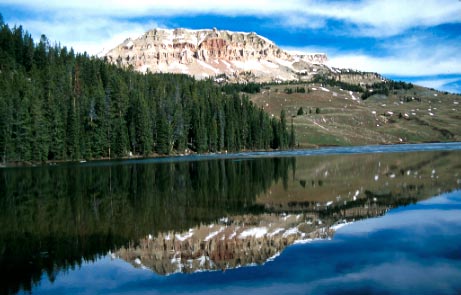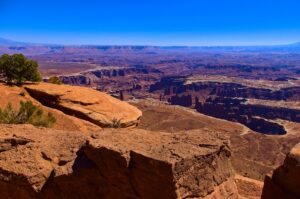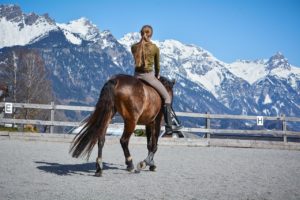Visiting national parks can be expensive. Whether it’s admission fees or lodging, the costs can add up quickly. There are ways, however, to camp for free if you’re willing to stay just outside the park. And you’ll find many of the same amazing features and wildlife you’ll see in the parks themselves.
6 Options for free camping near national parks
- Grand Canyon
- Yellowstone and Grand Teton
- Yosemite
- Badlands and Wind Cave
- Great Smoky Mountains
- Zion and Bryce Canyon
Options Outside National Parks
There are generally two options for free camping outside of national parks. The first are National Forests. They are administered by the National Forest Service and generally have fewer restrictions. There are established campgrounds where you have to pay a fee, although you can generally camp outside of these established areas for free (dispersed camping).
The other option is land administered by the Bureau of Land Management. The Bureau of Land Management (BLM) is part of the Department of the Interior and oversees about 247 million acres of public land. In general, there are fewer rules and regulations for most activities on BLM lands. There are plenty of free dispersed camping opportunities on BLM land.
Keep in mind, however, that dispersed camping generally has no amenities, including water, bathrooms or trash removal. That said, here are some great places to camp for free.
Grand Canyon National Park
Kaibab National Forest
 Kaibab National Forest is just outside Grand Canyon National Park. The Kaibab National Forest has two main units. The North Unit is better for visiting the Grand Canyon’s north rim, while the South Unit (further divided into the Tusayan and Williams Ranger Districts) is naturally better for visiting the south rim. Dispersed camping is free in both areas.
Kaibab National Forest is just outside Grand Canyon National Park. The Kaibab National Forest has two main units. The North Unit is better for visiting the Grand Canyon’s north rim, while the South Unit (further divided into the Tusayan and Williams Ranger Districts) is naturally better for visiting the south rim. Dispersed camping is free in both areas.
In the North Unit, you can use the Indian Hollow Campground. There are three primitive, free campsites for tent camping. It’s located in the North Unit and is normally about a two hour drive from the North Rim Visitor Center.
Bordering the park to the south in is the Tusayan Ranger District. It’s about 360,000 acres that borders Grand Canyon National Park. You can camp there for 14 consecutive days. Depending on where you’re staying, you may be as little as a half hour from the South Rim Visitor Center.
Yellowstone and Grand Teton National Parks
Shoshone National Forest
 Clarks Fork of the Yellowstone is located near both Yellowstone National Park and Grand Teton National Park. The area is administered by the BLM. The Clarks Fork also runs into the Shoshone National Forest. Both areas are great opportunities for free camping near Yellowstone and Grand Teton.
Clarks Fork of the Yellowstone is located near both Yellowstone National Park and Grand Teton National Park. The area is administered by the BLM. The Clarks Fork also runs into the Shoshone National Forest. Both areas are great opportunities for free camping near Yellowstone and Grand Teton.
Dispersed camping is allowed for free in remote areas of the Shoshone National Forest. You can stay for up to 16 days. You’ll also find some restrictions and other rules apply. Click here to find out what the rules are.
The Forest also has two dispersed camping areas, the Beartooth Plateau and Lander areas. If you’re visiting Yellowstone, you’ll want to stay in the Beartooth area. There are two primitive camping areas, the Lily Lake and Little Sunlight areas. Staying there is free, but there will not be any amenities available.
Depending where you stay, you may only be minutes from Yellowstone or about a half hour away from Grand Teton.
Yosemite National Park
There are three national forests near Yosemite National Park where there is free camping.
Stanislaus National Forest
 North of the park you’ll find Stanislaus National Forest. At almost 900,000 acres, there are plenty of things to do and explore in the forest. You can avoid the crowds at Yosemite and experience the beautiful Sierra Nevada Mountains, but you can also find dispersed camping for free. There are three dispersed camping areas. The Highway 108 Corridor, the Highway 120 Corridor and the Highway 4 Corridor all have areas to camp. You can find more information here.
North of the park you’ll find Stanislaus National Forest. At almost 900,000 acres, there are plenty of things to do and explore in the forest. You can avoid the crowds at Yosemite and experience the beautiful Sierra Nevada Mountains, but you can also find dispersed camping for free. There are three dispersed camping areas. The Highway 108 Corridor, the Highway 120 Corridor and the Highway 4 Corridor all have areas to camp. You can find more information here.
Sierra National Forest
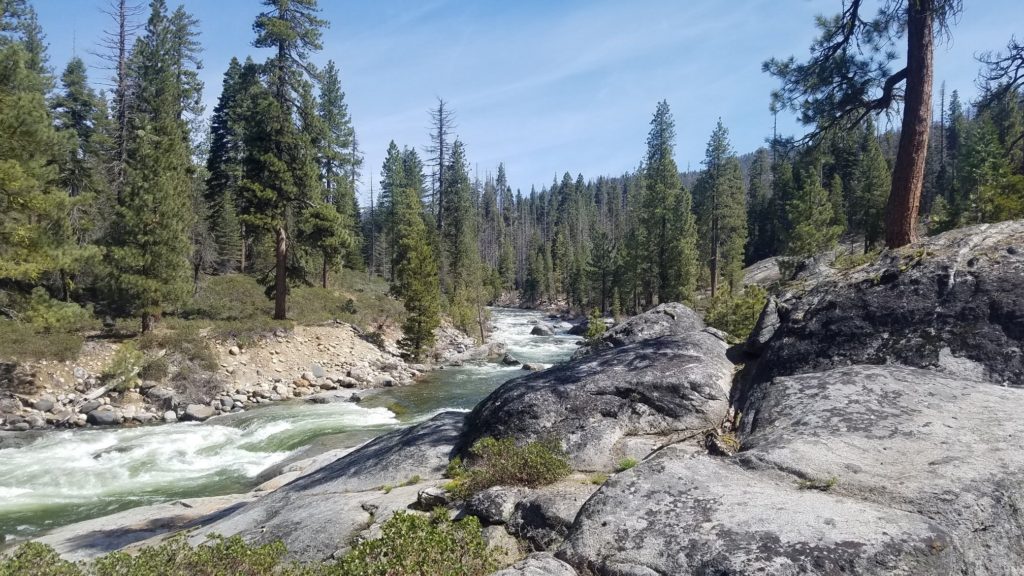 South of Yosemite you’ll find Sierra National Forest. Here you’ll find amazing lakes and mountains set away from the crowds of Yosemite. There are plenty of great free camping areas in the park. The park maintains more than a half dozen areas, although there some exceptions to be aware of. The forest also has the advantage of being near other national parks. If you travel south from the forest, you’ll find Kings Canyon and Sequoia National Parks.
South of Yosemite you’ll find Sierra National Forest. Here you’ll find amazing lakes and mountains set away from the crowds of Yosemite. There are plenty of great free camping areas in the park. The park maintains more than a half dozen areas, although there some exceptions to be aware of. The forest also has the advantage of being near other national parks. If you travel south from the forest, you’ll find Kings Canyon and Sequoia National Parks.
Inyo National Forest
 If you’re willing to travel a little further out, you’ll find Inyo National Forest. Located in the eastern Sierra Nevada Mountains, you’ll find some unrivaled scenery and recreation opportunities in its nearly one million acres. There are areas, however, where you’ll need a permit.
If you’re willing to travel a little further out, you’ll find Inyo National Forest. Located in the eastern Sierra Nevada Mountains, you’ll find some unrivaled scenery and recreation opportunities in its nearly one million acres. There are areas, however, where you’ll need a permit.
Also, parts of the land are owned by the National Forest Service, the BLM and the City of Los Angeles. You’ll want to camp on Forest Service and BLM land, which is free of charge. If you’re looking to go the other way, much of the forest is an easy drive from Death Valley National Park as well.
Badlands and Wind Cave National Parks
Buffalo Gap National Grassland
 Buffalo Gap National Grassland is located near Badlands National Park in the western South Dakota. The area is managed by the National Forest Service and covers about 600,000 acres of undeveloped wilderness. Buffalo Gap abuts Badlands and is a short drive to Wind Cave National Park.
Buffalo Gap National Grassland is located near Badlands National Park in the western South Dakota. The area is managed by the National Forest Service and covers about 600,000 acres of undeveloped wilderness. Buffalo Gap abuts Badlands and is a short drive to Wind Cave National Park.
Most of the entire Buffalo Gap area is open to dispersed camping and is free of charge. The National Forest Service does have some recommended areas for dispersed camping. Some of them are suitable for RV camping as well. Check out the list here, which will also give you an idea for the best place to camp based upon your interest. Some are better for rock hounding, scenic drives, or are next to bodies of water.
Because of the lack of good roads and development in the area, many of these areas will require high-clearance vehicles. Depending where you are in the park, you may be only minutes away from Badlands National Park and an hour or so away from Wind Cave.
Great Smoky Mountains National Park
Cherokee National Forest
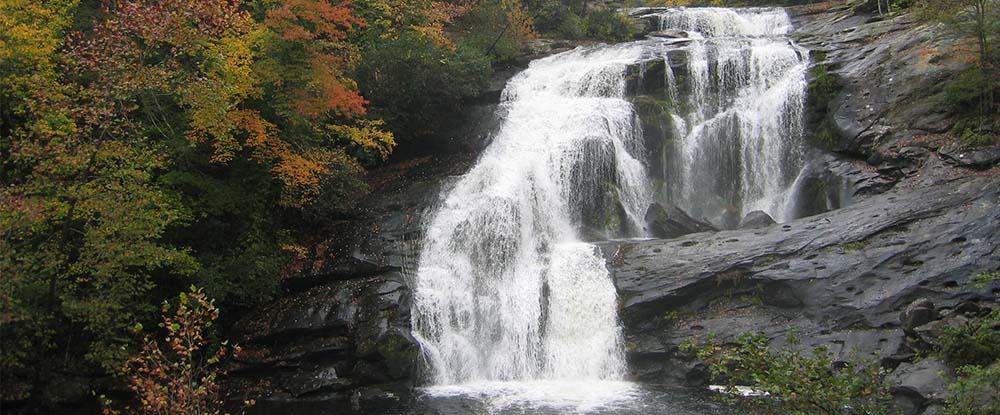 Located right near Great Smoky Mountains National Park is Cherokee National Forest. Great Smoky is the most visited national park in the United States, so opportunities for camping in the park can be expensive and limited, sometimes requiring reservations up to a year in advance. But if you’re willing to stay about a half hour outside park boundaries, you’ll find some great and free options.
Located right near Great Smoky Mountains National Park is Cherokee National Forest. Great Smoky is the most visited national park in the United States, so opportunities for camping in the park can be expensive and limited, sometimes requiring reservations up to a year in advance. But if you’re willing to stay about a half hour outside park boundaries, you’ll find some great and free options.
Dispersed camping in Cherokee National Forest is free and does not require a permit. The Forest is divided into northern and southern sections by Great Smoky Mountain. There are three dispersed camping areas: Citico Creek, French Broad River, and Tellico River. North of the park lies the French Broad River area. Within the area, a popular spot for dispersed camping is the Paint Creek Corridor. Dispersed camping there is only permitted in designated sites.
South of the park are the Citico Creek and Tellico River areas. Together they encompass more that 50,000 acres of wilderness. You’ll find several dispersed camping sites in both areas. The sites are primitive without water, toilets, or trash removal.
Zion and Bryce Canyon National Parks
Dixie National Forest
 Located in southern Utah, Dixie National Forest sits between Bryce Canyon and Zion National Parks and covers nearly 2 million acres. It offers plenty of areas for dispersed camping if you don’t want to pay to stay in the parks.
Located in southern Utah, Dixie National Forest sits between Bryce Canyon and Zion National Parks and covers nearly 2 million acres. It offers plenty of areas for dispersed camping if you don’t want to pay to stay in the parks.
The park is divided into two sections, the Cedar City Ranger District and the Powell Ranger District. To the North, the Powell District, nicknamed “Little Bryce”, will give you many of the same features you’ll see in Bryce Canyon National Park without the crowds.
The Cedar City District will keep you closer to Zion National Park. Here you’ll find amazing scenery and several designated dispersed camping areas. Most sites are first-come, first-serve, so you’re not guaranteed room. All of the sites are free but have no amenities. For a complete list of the areas, you can check out the Forest Service website.
Either way, depending on where you stay you should be less than an hour away from either Zion or Bryce Canyon.

